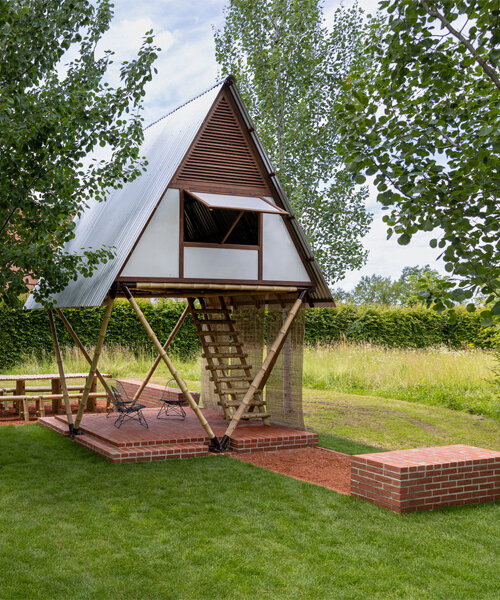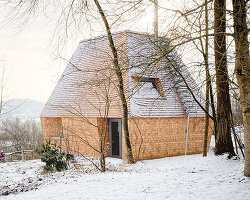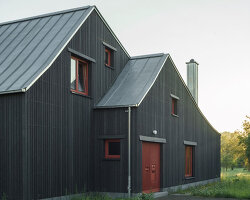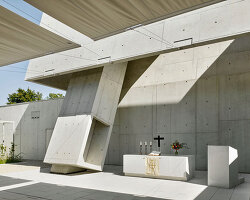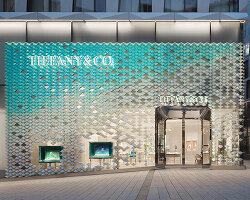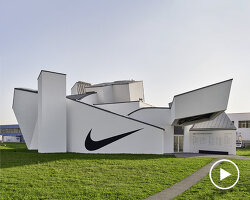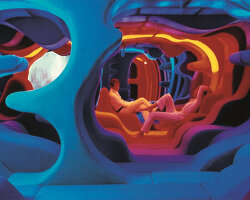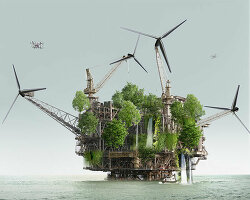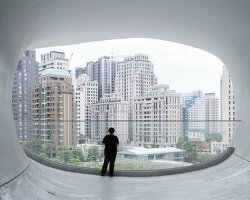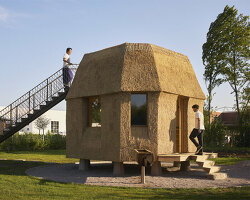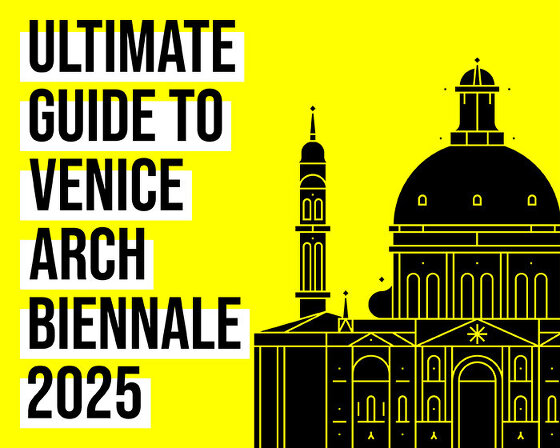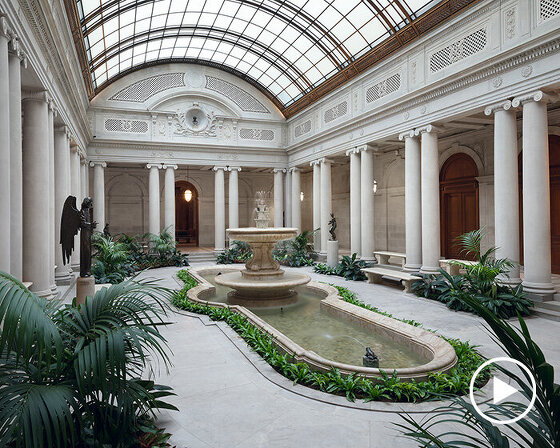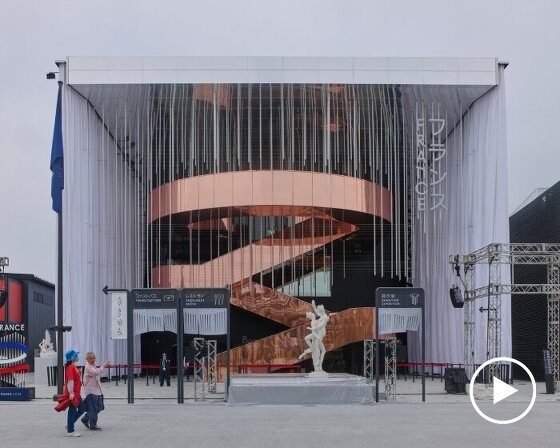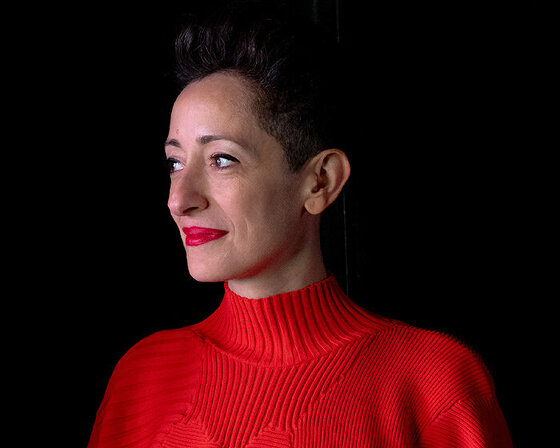Khudi Bari by Marina Tabassum lands at vitra campus
The Vitra Campus in Weil am Rhein expands its architectural treasure trove with Khudi Bari. Designed by Bangladeshi architect Marina Tabassum and her team, the project responds to the need for innovative solutions amid the climate crisis, specifically to floods becoming more frequent in Bangladesh, forcing countless people to look for a new home. Translating to ‘small house’, Khudi Bari is an extremely low-cost and lightweight structure that can be erected, dismantled, transported, and reassembled elsewhere by the residents themselves — without electricity or any other means of mechanical power. Marina Tabassum has been building these houses in the chars with relief organizations and community groups, with over one hundred installed and more to come.
Khudi Bari joins other small-scale structures by Tsuyoshi Tane, Renzo Piano, Jean Prouvé, Kazuo Shinohara, Zaha Hadid, Jasper Morrison, and more. These projects complement the campus’ main landmarks, including five factory buildings, the VitraHaus, Vitra Shaudepot, and Vitra Design Museum and Gallery. Discover all of the campus interventions below.
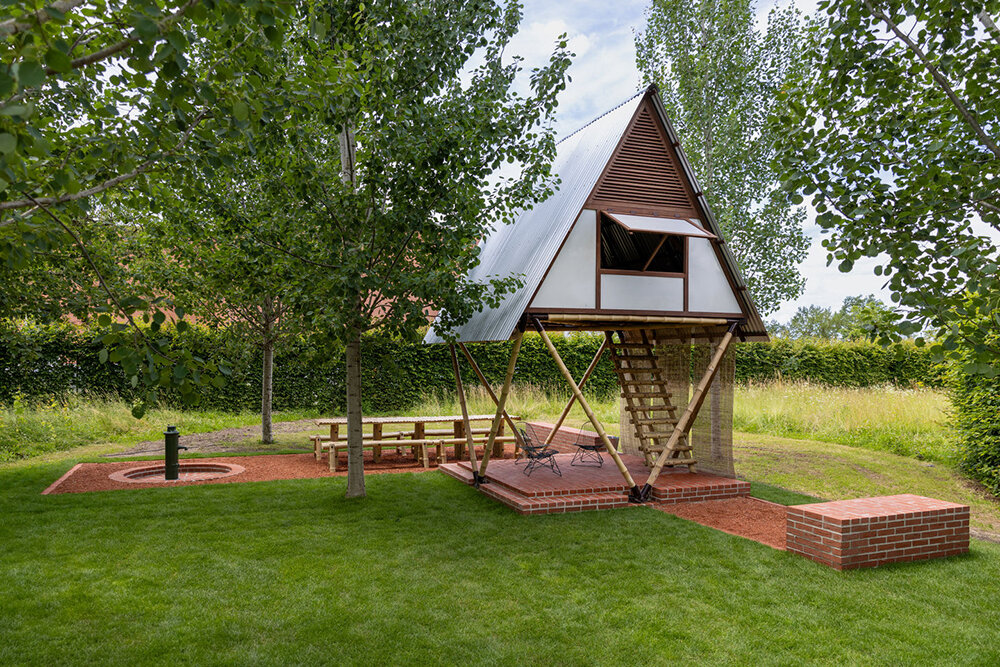
Khudi Bari by Marina Tabassum | image © Julien Lanoo, all courtesy Vitra
TANE GARDEN house (2023) by Tsuyoshi Tane
Tucked between the Umbrella House and Oudolf Garten at the Vitra Campus, the Tane Garden House is the work of Paris-based studio Atelier Tsuyoshi Tane Architects, taking shape as a compact, octagonal wooden shed that spans 15 square meters and accommodates eight people. In addition to wood, the material palette includes granite stone and dried grass enveloping the building exterior. The resulting composition and building form allude to a primitive hut, one where architecture is kept simple, warm, and inviting for visitors. Beyond sourcing what was available on site, Tsuyoshi Tane teamed up with local craftsmen using sustainable techniques and resources. Together, they equipped the shed-like structure with a snug interior, fitting it with a toilet, a sink, and a storage space for gardening tools. Topping it is a viewing platform that can be accessed by an outdoor staircase, framing gentle views of the Oudolf Garten, the Umbrella House, and the rest of the Vitra Campus.
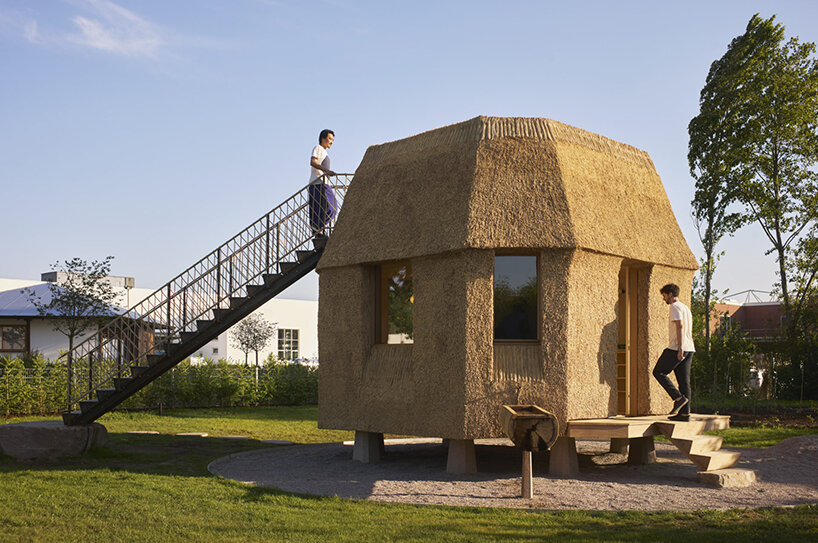
Tane Garden House by Tsuyoshi Tane | image © Julien Lanoo (read more here)
umbrella house (1961-2022) by kazuo shinohara
The Umbrella House by iconic and influential architect Kazuo Shinohara has been successfully transported from Japan and reconstructed at the VITRA Campus. The structure was originally built in 1961 in Tokyo under the architect’s so-called First Style, which drew from Japan’s architectural tradition. Now, it occupies the campus of the Vitra Design Museum as a venue for small gatherings and a didactic space that shares insights into the modern architecture of Japan. The timber structure draws on traditional vernacular architecture seen throughout the temples and dwellings of Japan. It is defined by its square floor plan and traditional motifs such as its namesake ‘umbrella’ pyramidal roof form, which was previously only employed in the design of temple complexes. The Japanese architect had curated a simple and inexpensive material palette, including locally sourced timber and cement fiber boards.
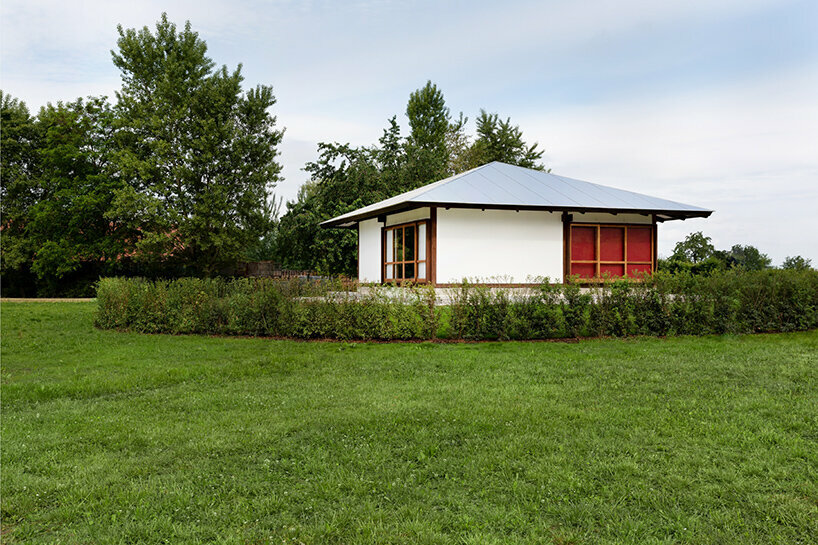
Umbrella House by Kazuo Shinohara | image © Dejan Jovanovic (read more here)
blockhaus (2018) by Thomas Schütte
Blockhaus is a small structure by the German artist Thomas Schütte. Serving as a shelter with a watering place, it adheres to principles different from those of the buildings on the campus designed by architects, thereby presenting an ambiguous antipode. Set on a slightly irregular hexagonal footprint, the cabin is constructed from untreated Nordic pine which will take on a grey tone as it ages. The visually prominent roof features titanium zinc shingles, whose gleaming metal contrasts the archaic log structure. An opening on one side invites visitors to enter. Two simple benches are mounted along the interior walls. The central area contains a trough fountain of fired clay, offering fresh water to cool off or enjoy a drink. Blockhaus is an object derived from a 1:10-scale model exhibited by Thomas Schütte in 2016 at the Galerie Konrad Fischer in Düsseldorf.
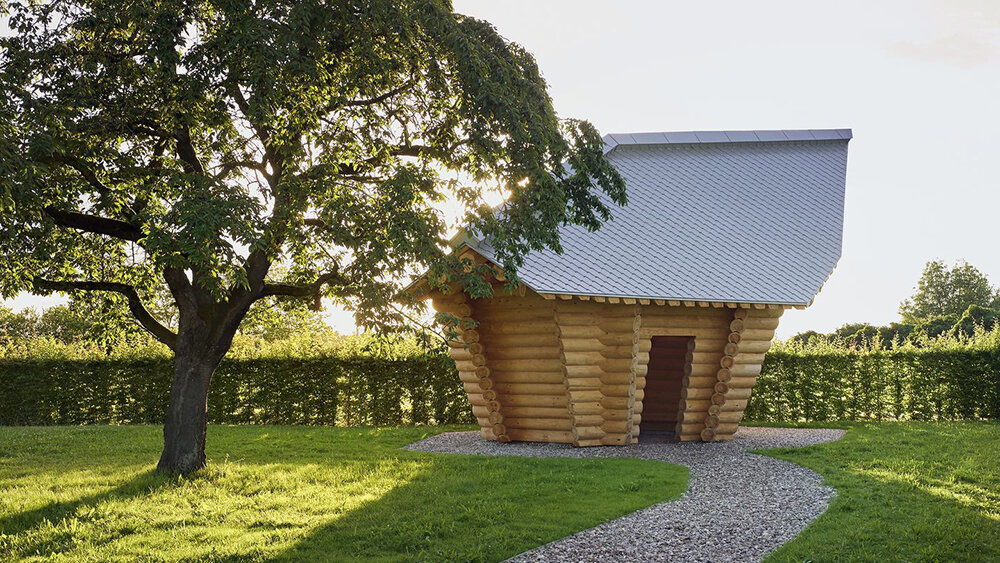
Blockhaus by Thomas Schütte
Diogene (2013) by Renzo Piano
With Diogene, Renzo Piano and his architecture office, Renzo Piano Building Workshop, have developed a living unit that unites all elementary functions of temporary living under one roof in a modest living space of six square meters. As the modern interpretation of an archaic cabin, Diogene is the smallest building of the architectural ensemble in Weil amRhein. The building is named after the ancient Greek philosopher Diogenes of Sinope (Diogene di Sinope in Italian), who is said to have lived in a barrel because he considered worldly luxuries superfluous. The living units sit close to Marina Tabassum’s structure, which recently landed on the campus.
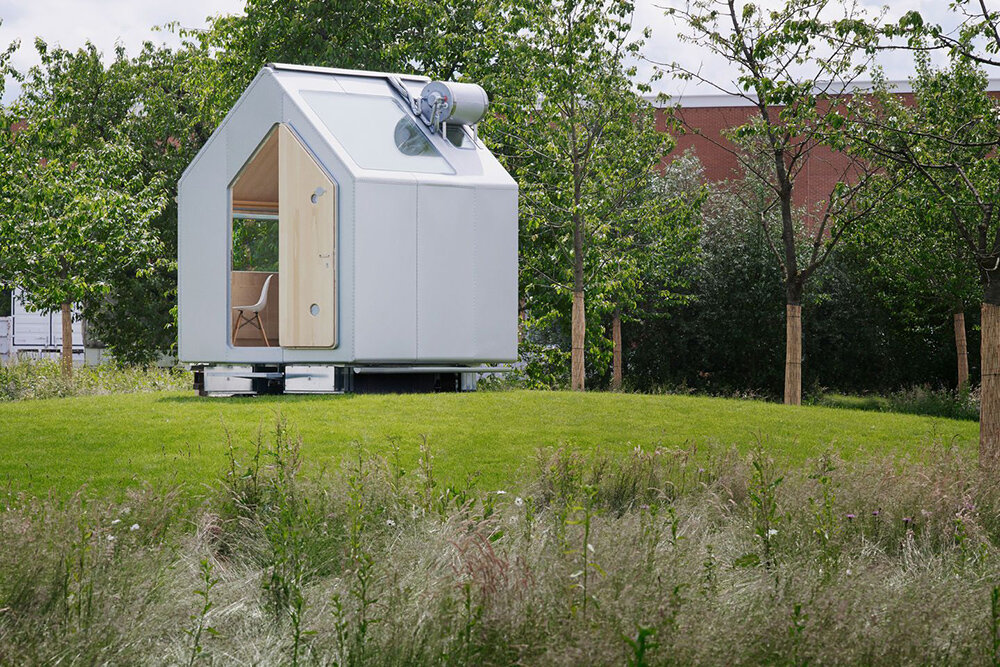
Diogene by Renzo Piano
vitra slide tower (2014) by carsten höller
The 30.7-meter-high Vitra Slide Tower by the German artist Carsten Höller is a viewing tower, slide, and art installation in one. It consists of three diagonal columns that meet at the top, with a revolving clock mounted at their point of intersection measuring six meters in diameter. The construction is vertically accessed via a double-flight staircase fitted into the slanted columns with intermediate landings. A viewing platform at the height of 17 meters offers new perspectives of the Vitra Campus and the surrounding landscape. The platform is the starting point for the 38-meter-long corkscrew tube slide.
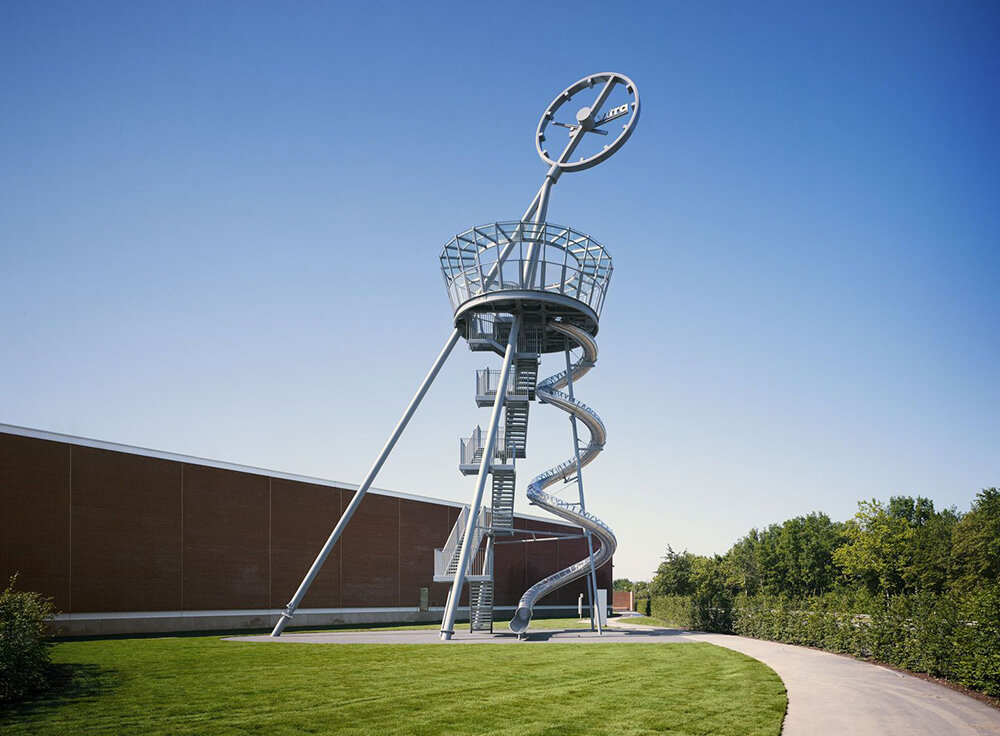
Vitra Slide tower by Carsten Höller (read more here)
fire station (1993) by zaha hadid
After a major fire in 1981, Vitra established its fire brigade and commissioned Zaha Hadid to design a building for it. However, recognizing that their fire brigade could only manage fires in their initial stages and couldn’t replace public fire services, Vitra disbanded the brigade a few years later. Since then, the building has been repurposed for events and exhibitions by the Vitra Design Museum. Today, the Weil Fire Services, in cooperation with the Basel Fire Services, are responsible for protecting the Vitra Campus. The Fire Station was Zaha Hadid’s first architectural project. It includes spaces for fire engines, showers, changing rooms for the firefighters, a conference room, and a kitchenette. The building, sculpted on-site from concrete, stands out with its dramatic angular features and lack of color. It creates a unique spatial experience for visitors and contrasts sharply with the neighboring production facilities, resembling a frozen explosion.
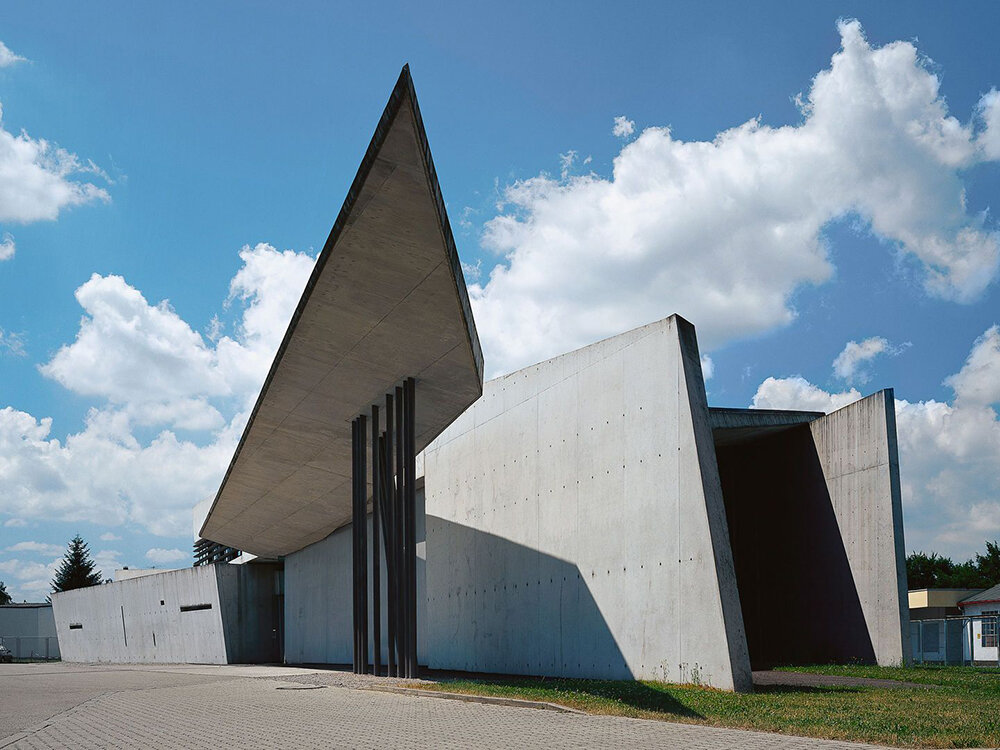
Fire station by Zaha Hadid
Dome (1975-2000) by Buckminster Fuller
Influenced by his experiences during the Second World War, Richard Buckminster Fuller designed a modified geodesic dome as housing for army troop units, the wounded, or refugees. The aluminum tubes that form the frame are connected via a plug-in system, facilitating the construction’s quick assembly and dismantling. Buckminster Fuller’s construction principle was patented in 1954 in the USA. The Dome on the Vitra Campus was created in 1975 at Charter Industries and was the product of a collaboration with Thomas C. Howard. In 1978/79, it served as a car showroom in Detroit (USA). In 2000, Rolf Fehlbaum bought it at an auction and installed it in Weil am Rhein in the same year. Today, the tent construction is used as a space for events and exhibitions.
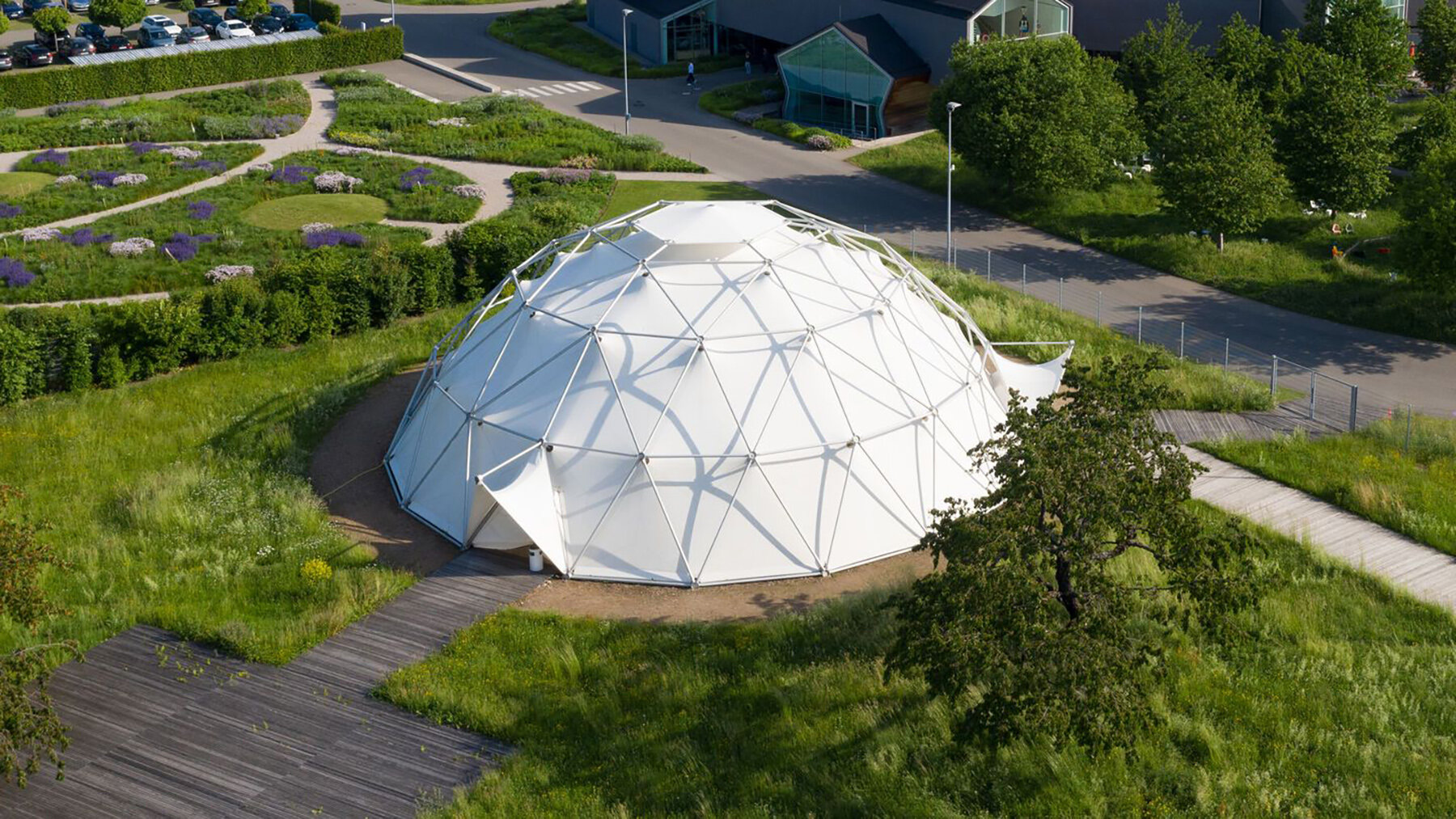
Dome by Buckminster Fuller
bus stop (2006) by jasper morrison
The glass walls of the bus stop made of polished steel provide views of the Vitra Campus and the wine-making village of Ötlingen. People waiting at the bus stops can sit on Wire Chairs, which were designed by Charles and Ray Eames and produced by Vitra. The two bus stops gracing the entrance to the Vitra Campus are unique and elegantly simple constructions designed by English product and furniture designer Jasper Morrison.
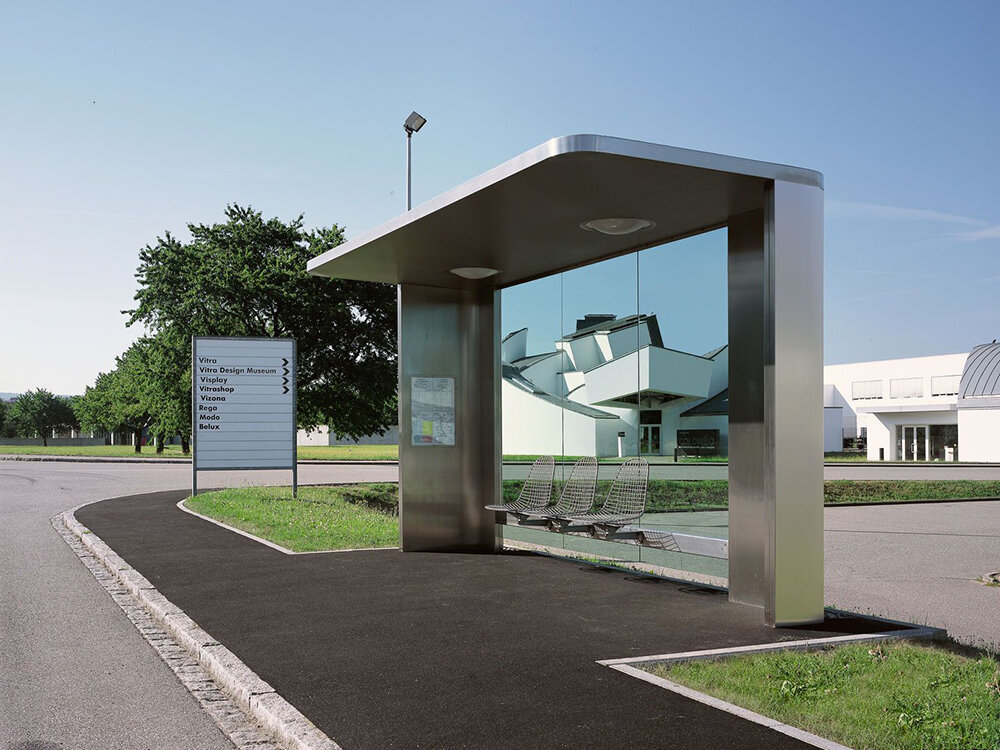
Bus Stop by Jasper Morrison
petrol station (1953-2003) by jean prouvé
The petrol station was designed in 1953 by Jean Prouvé and his brother Henri and is one of the first serially manufactured petrol stations. It was built in 1953 for Mobiloil Socony-Vacuum and stood at ‘Relais des Sangliers’ in the Département Haute-Loire. Created modularly of individual pieces, this one of only three remaining stations was installedon the Vitra Campus in 2003. The building consists of angular aluminum components and sheeting perforated with bull’s eye cut-outs. The load-bearing structure and wall construction are differentiated from one another, a distinction reinforced by the color scheme. Many of the buildings by Prouvé constructed out of prefabricated metal components have structural and formal qualities almost identical to his table designs and demonstrate his consistent adherence to tectonic principles in the design process.
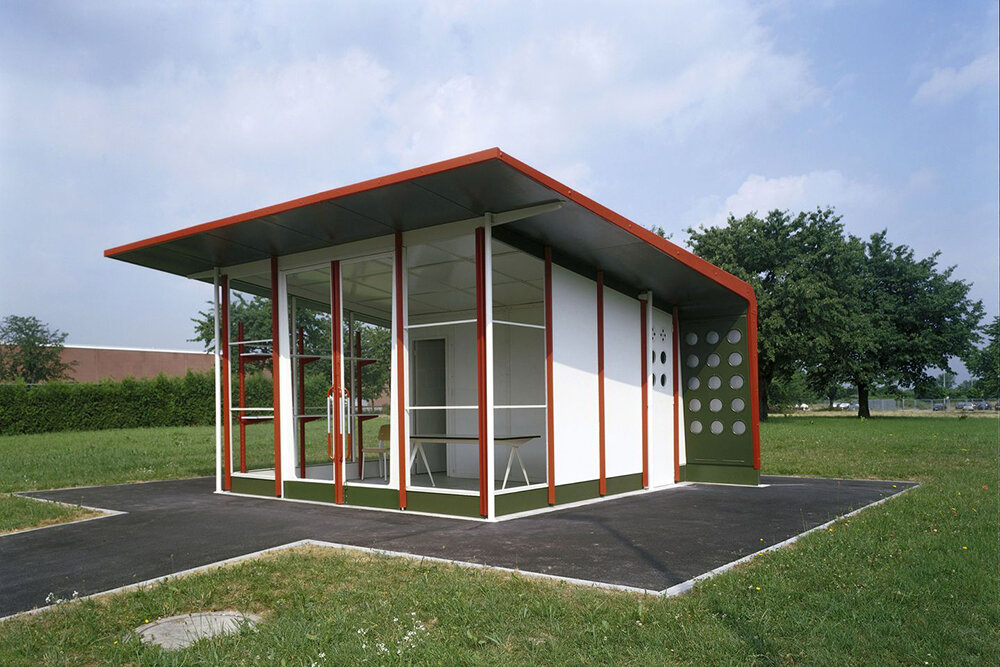
Petrol Station by Jean Prouvé
airstream kiosk (1968-2011)
The original Airstream trailer, a 20’ 1968 Globetrotter, was discovered by a trucker scout in Nevada and shipped to Hamburg, Germany. Since its restoration in 2011, Vitra has owned it and made it part of the Vitra Campus. During the summer months, it is used as a take-away restaurant, which increases the culinary offerings available on the Vitra Campus.
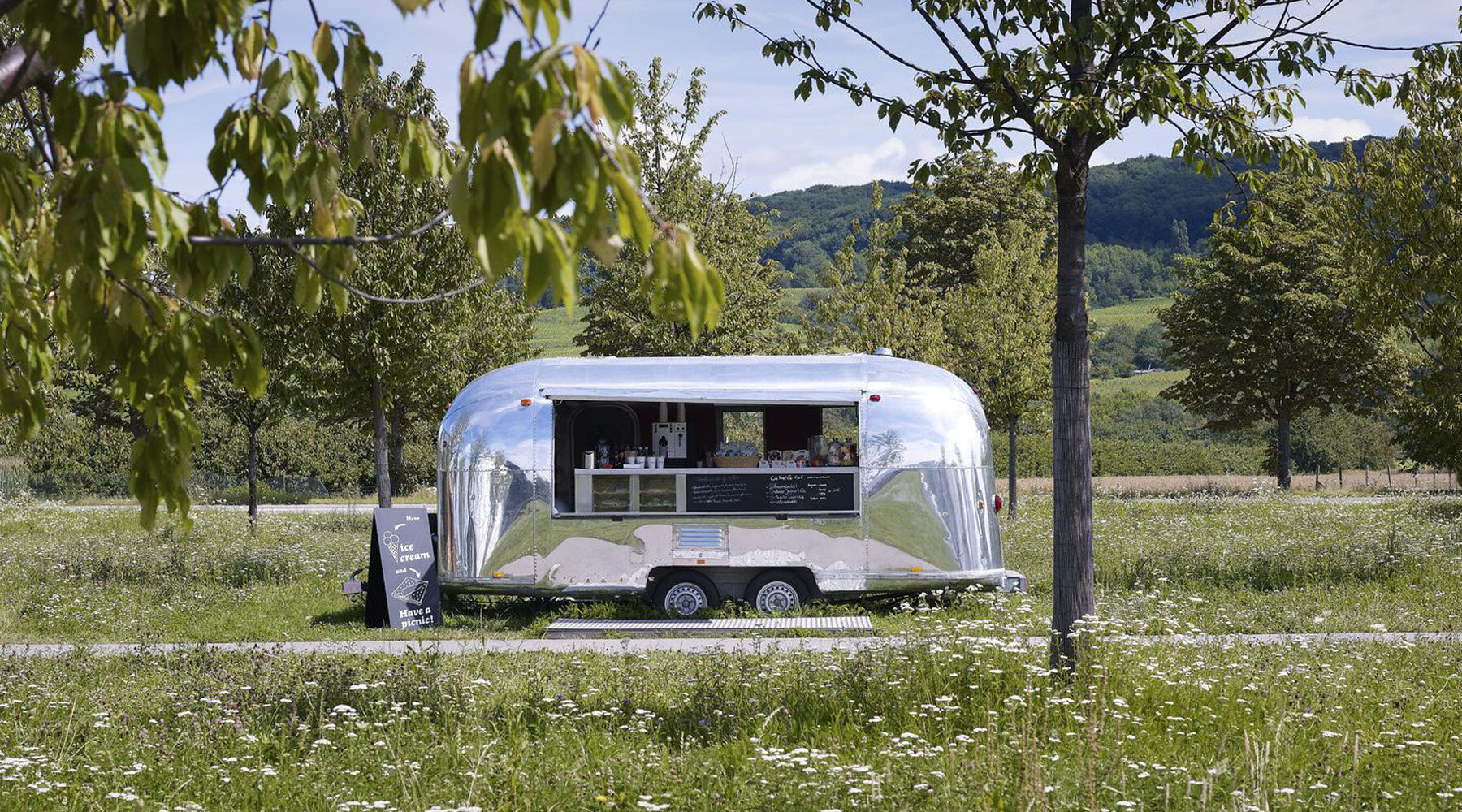
ring and ruisseau (2018) by Ronan & Erwan Bouroullec
Across from the Khudi Bari by Marina Tabassum, the Ring and Ruisseau by Ronan & Erwan Bouroullec invite visitors to prolong their visit to the Vitra Campus in Weil am Rhein. Ruisseau is a narrow channel carved in a marble base, filled with running water, while Ring is a circular platform made of galvanised steel that appears to float above the ground.Encircling a cherry tree, it serves as a collective bench. Both objects are installed in the public area of the northern Vitra Campus, along the Alvaro-Siza-Promenade.
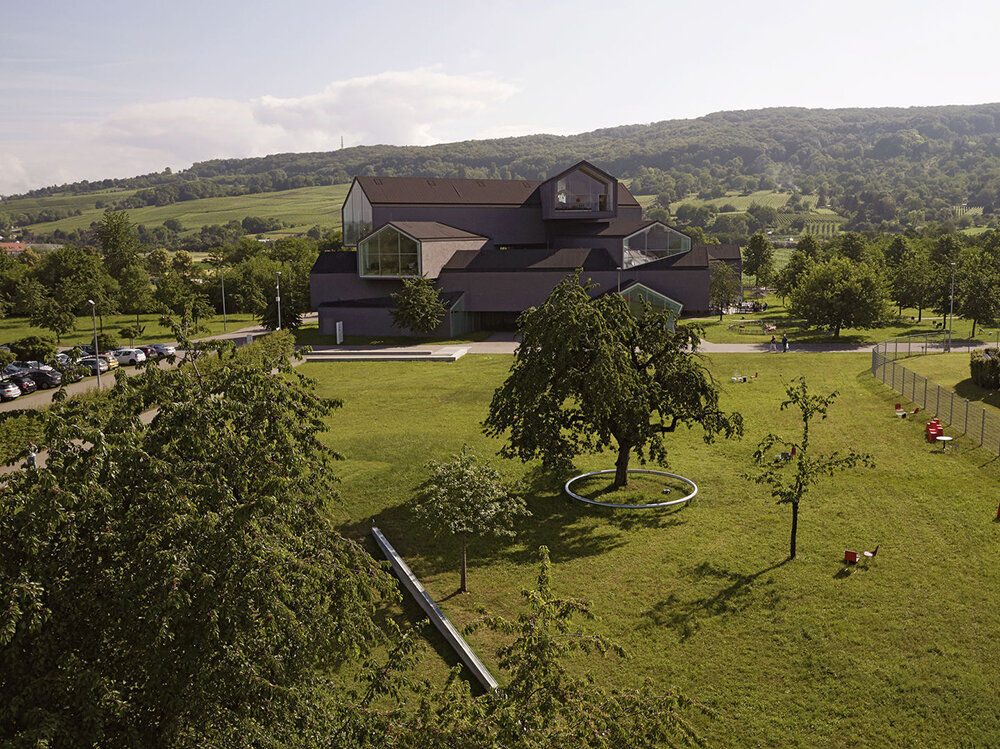
Ring and Ruisseau by Ronan & Erwan Bouroullec (read more here)
Álvaro-Siza-Promenade (2014)
The 500-meter-long Álvaro Siza Promenade is a walkway flanked by hornbeam hedges that passes along the west side of Siza’s earlier factory building and connects the VitraHaus with the Fire Station by Zaha Hadid. It is conceived as a path with various stations: its sequential ‘episodes’ allow wide-ranging views of architecture and nature. These include an S-shaped common area close to the Marina Tabassum structure, framed by hedges, the Vitra Slide Tower by Carsten Höller, and an archaic-looking double chamber formed from interpenetrating brick and granite walls.
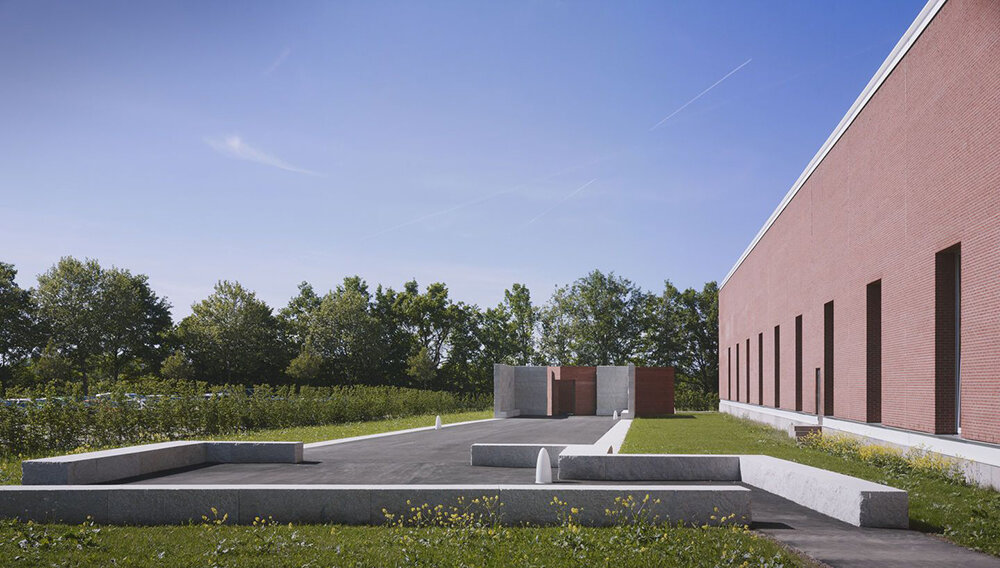
Álvaro-Siza-Promenade
conference pavilion (1993) by tadao ando
The 1993 construction of the Conference Pavilion by Tadao Ando was the architect’s first building outside Japan. The calm and restrained structure encompasses an assortment of conference rooms. It is characterized by a highly ordered spatial articulation with a large part of its volume concealed below grade. A striking feature is the footpath leading to the pavilion, which has a significant association with meditation paths in the gardens of Japanese monasteries. Because cherry trees are of great traditional importance in Japan, Ando sought to preserve as many as possible. Only three cherry trees had to be felled in order to make room for the building.
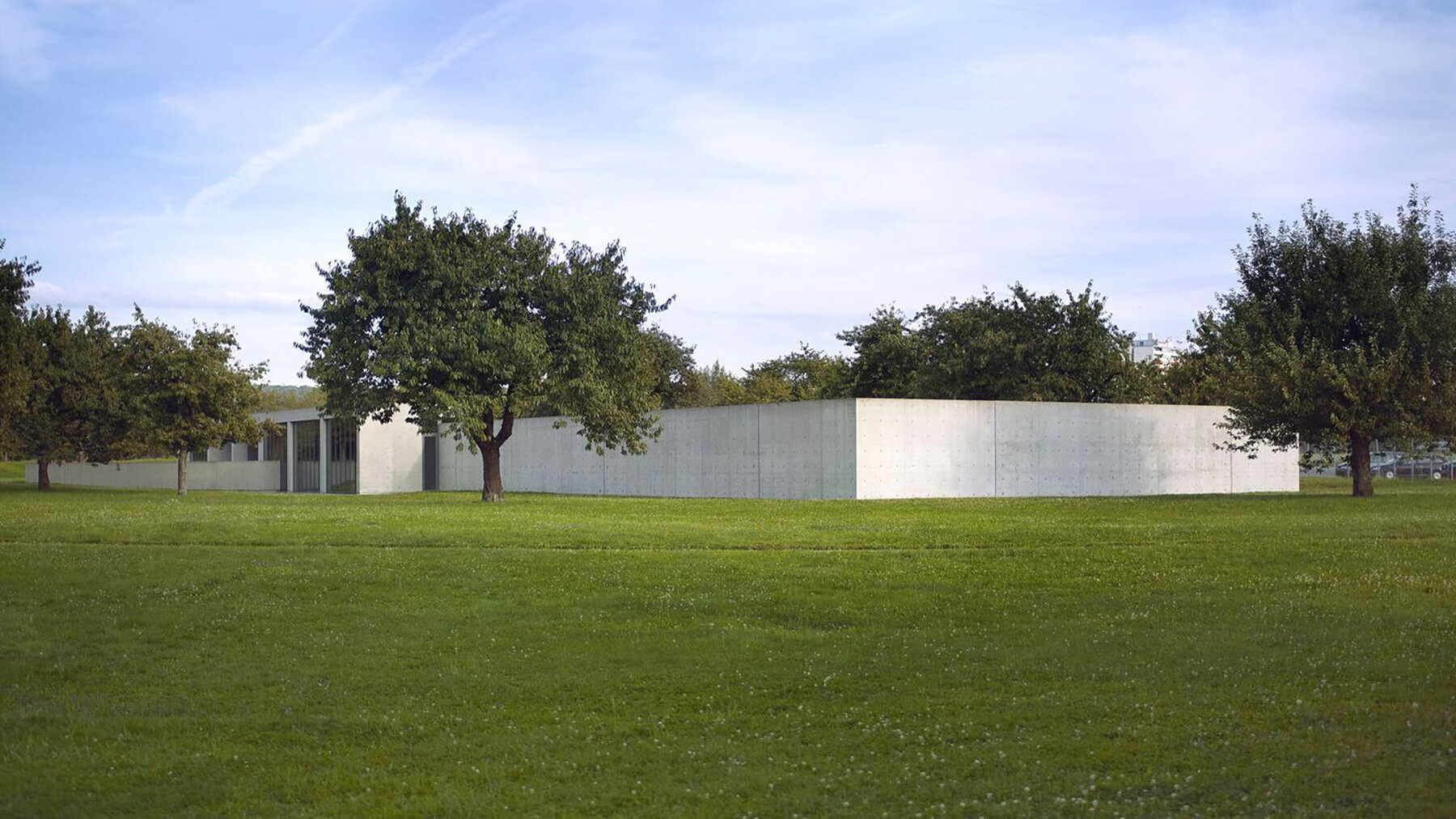
Conference Pavilion by Tadao Ando
